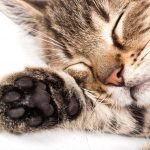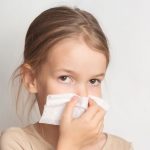TANYA LEE, ND
The circadian system is a powerful regulatory system that guides the physiology of living organisms through synchronizing physiological processes to the external environment. This system of ultimate homeostatic regulation has evolved over time and gives organisms a competitive advantage by allowing them to predictably adapt to external fluctuations within physiological range.1 The 12-hour diurnal pattern, contained within a 24 hour cycle, directs specific physiological and metabolic processes to function during the circadian day (active phase) vs the circadian night (rest phase).
In humans, the circadian system consists of a “core oscillator” located at the suprachiasmatic nucleus (SCN) within the hypothalamus. This core oscillator is considered the central pacemaker of our circadian system and is “entrained” by external factors called “zeitgebers.” Light is the principal zeitgeber of the master clock. Entrainment is the alignment of an organism’s endogenous circadian rhythm to the rhythms of the external environment.2 This master clock entrains our “peripheral clocks,” the second component of the circadian system, which are located in almost all tissues in the human body.3,4 The circadian system is a major contributor to the health and well-being of humans. Ten-percent of our genome is under circadian control, with regulation occurring at both the transcriptional and post-translational level.2–4
Circadian misalignment, a term used to describe disruption in the endogenous patterns of our clocks, occurs when deliberate changes are made to our circadian daily patterns, typically unbeknownst to the person. Examples include social jetlag, frequently shifting time zones, and shift-work.1 Circadian misalignment is an independent risk factor for many inflammatory health conditions, including cancer, allergies, metabolic disease, cardiovascular risk, and depression.3,5 Shift-work, specifically, has also been found to be an independent risk factor for many chronic diseases, including diabetes.6 The fact that cardiovascular events and inflammatory disorders such as rheumatoid arthritis can show diurnal variations in symptom severity indicates the potential impact of circadian rhythms on immune function.2 The understanding that immune function is at least partially directed by circadian rhythms has inspired researchers to investigate whether immune responses to viral infections may also be under circadian control. The purpose of this article is to explore the interactions between the circadian system and the immune system’s response to viral infections.
Circadian Influences on Immunity
It has been found that peripheral immune cells contain functional clock-controlled genes and that disruption of circadian patterns can alter immune function.5,7 This has been demonstrated through the discovery that the expression of immune mediators, such as chemokines, cytokines, their receptors, and adhesion molecules, exhibits daily rhythmic oscillations.5 In both humans and (nocturnal) rodents, lymphocytes are at their highest levels during the rest period, whereas natural killer (NK) cells and cytotoxic effector cells have been shown in both humans and animals to be at their highest during wakefulness.5 Interestingly, in humans, inflammatory cytokines have been observed to be at their highest during the night or in the early morning.5
Recent animal studies found that immune responses against infections are more efficient when animals are exposed to pathogens during their active phase, whereas the immune response to infection is less robust when the exposure takes place during the rest phase.6,8
In short, these findings suggest that the immune system may be primed to fight infections during the active phase (daytime for humans), but be less efficient during the rest phase (nighttime for humans). This evolutionary change may have resulted from the active phase being associated with increased risks, such as contracting infection through injury, consumption of contaminated food, and/or attack by another animal.8
Time of Infection Influences Survival
The current literature supports the notion that the time of infection strongly influences survival outcomes of the host. Sengupta et al conducted an animal study in which the time of exposure was found to determine mortality and morbidity in response to influenza infection.1 Mice infected with influenza A virus towards the end of the rest phase had increased weight loss, more respiratory symptoms, and overall higher risk of mortality when compared to mice that were infected towards the end of the active phase. To ensure these outcomes were completely related to endogenous circadian rhythms and not the influence of light, the same experiment was performed under constant darkness. Despite this change, similar outcomes were observed.1
Another study, performed by Edgar et al, found that in wild-type (WT) mice infected at the onset of the resting phase with recombinant luciferase–expressing Murid Herpes Virus 4 (M3:luc MuHV-4), viral replication was 10-fold higher compared to WT mice infected at the onset of the active phase.6 To confirm that their results were related to circadian patterns, they repeated the study in Bmal1-/- (knockout) mice. Bmal1 is a core clock protein encoded by the gene Bmal1-/-, which is integral for maintaining endogenous circadian patterns. Bmal1-/- mice did not exhibit differences in viral responses between being infected at the active vs rest phase; however, these mice exhibited higher levels of the MuHV-4 infection compared to both WT mice.6
Circadian Misalignment Impacts Infection Severity
Using Bmal1-/- mice in these studies allows us to better understand how circadian disruption may influence outcomes of a viral infection. The importance of Bmal1 in maintaining endogenous circadian oscillations was highlighted in Sengupta’s study, where deletion of this gene caused circadian disruption among subjects under constant darkness, as compared to Bmal1-intact subjects whose endogenous regulation was maintained.1
Majumdar et al tested this theory by observing immune responses against RNA viruses in mice.9 In this study, Bmal1-/- mice infected with respiratory syncytial virus (RSV) had worse outcomes in response to infection compared to WT mice. RSV replication (as well as parainfluenza virus type 3) was also 5-10 times higher in Bmal1-/- human cells and mice, as compared to their wild-type counterparts. However, the effect on viral replication may not be directly related to antiviral activity; rather, it may be circadian influences on inflammatory responses that most impact viral replication.
Circadian System Influences Viral Clearance
Host responses to viral infections can vary from efficient to dysfunctional, where success is measured by the ability to clear an infection without surpassing host tolerance. While inflammation is required to effectively fight an infection, a balance between inflammation and host tolerance is necessary for proper recovery and effective viral clearance.
To better understand how the circadian system influences viral infection outcomes, Sengupta et al, in the study referenced earlier, measured viral titers in both active-phase-infected mice and rest-phase-infected mice at 6 hours, 12 hours, and every second day until day 10 post-infection.1 Differences between the groups were not significant until 8 days post-infection. At this point, more mice infected during the rest phase showed low rates of viral clearance despite higher levels of inflammation, while the majority of the mice infected during the active phase had cleared the virus. They also found that while viral titers were similar between the 2 groups, increased cellularity in the bronchoalveolar lavage specimens indicated that mice exposed during the rest phase had higher levels of inflammation compared to mice infected during the active phase.1 This study demonstrated that circadian patterns influences viral clearance through modulating inflammatory responses against infection.
The influence of the circadian system on inflammatory responses can be further elucidated by studying another core clock gene, Clock, which encodes the protein CLOCK. This protein heterodimerizes with BMAL1 to activate clock-controlled genes.2,5 Spengler et al performed an in-vivo study that exposed mice to lipopolysaccharide (LPS), a potent inducer of inflammation, at 2 different times of day: midway through their rest phase, and midway through their active phase.10 Not surprisingly, mice challenged during their active phase had better tolerance of LPS-induced acute inflammation compared to mice challenged during their rest phase. These responses were observed to be mediated through transcription factor nuclear factor kappa-B (NF-ĸB), as NF-ĸB-dependent inflammatory gene expression was higher during the rest phase compared to the active phase.10 How the circadian system is involved in this response is based on the interaction between CLOCK and the p65 subunit of NF-ĸB, as this complex binds and activates the promoters and therefore the transcription of genes encoding inflammatory proteins. Spengler’s study also found that NF-ĸB responses are diminished in the absence of CLOCK, suggesting that CLOCK is required for NF-ĸB-induced inflammation. It was also found that CLOCK-induced NF-ĸB-mediated transcriptional activation is independent of its dimerization with core clock partner BMAL1; however, BMAL1 may suppress CLOCK-p65 NF-ĸB induced transcription of inflammatory genes. We can conclude from these findings that CLOCK and BMAL1 influence immune responses in an independent as well as an interdependent manner.10
Clinical Applications & Conclusions
The findings from the animal studies outlined in this article suggest that contracting infections during the active phase can improve the efficiency of immune responses, and that circadian disruption negatively alters immune responses to viral infections. While human studies corroborating these findings are severely lacking at this point, the findings from animal studies may be a helpful tool when supporting patients through viral infections using naturopathic methods. These concepts are already being applied clinically in conventional medicine. One unique area of study that best represents the clinical application of circadian patterns and immune responses is the timing of vaccine administration. Several studies have shown that morning vaccinations (ie, during the active phase for humans) against Mycobacterium tuberculosis and seasonal influenza elicit more favorable innate and adaptive immune responses compared to vaccinations administered later in the day.11–13
Seasonality, a circadian pattern on a larger scale, has also been found to have a profound effect on immune activity. This is well represented in the seasonal influence on symptoms observed in a number of immune-related chronic health conditions, such as mental health disorders, cardiovascular disease, and autoimmune diseases, as well as on susceptibility to infectious diseases.14 Simultaneous outbreaks of specific infectious agents in remote areas, as well as the persistence of these infections despite the absence of an epidemic spread, demonstrate the seasonal influence on viral infections.15 Understanding seasonal predictability has paved the way for the development of seasonal vaccinations, such as the widely implemented flu vaccine.
These concepts are not completely novel in naturopathic and herbal medicine. Renowned herbalist David Hoffman quotes in his book Medical Herbalism,
The role of the human immune system is not simply to resist the dangers present in the environment. Rather, it is part of the complex and beautiful dance of elements flowing back and forth between the human body and the rest of the world. Seen within the context of ecology, both human and environmental immunity is about harmony.16
What better representation do we have of this observation than the strong interaction between the earth’s 24-hour rotation and immune physiology? Herbalists appear to have been treating patients based on these concepts for many years.17 In herbal medicine, it is common to support patients during an infection by encouraging the immune system to work to fight an active infection during the active phase using herbs that provide strong antiviral and diaphoretic actions. The goal is to encourage the efficiency of the fever to peak and then to break before the rest phase so that the patient can recover during the anti-inflammatory circadian night. And if the findings from the animal studies discussed in this article are applicable to humans, this approach would be important, as induction of inflammation during the rest phase (instead of the active phase) is linked to excessive inflammatory responses and poorer outcomes during infections. One might consider that melatonin may play a key part in our immune response to viral infections during the circadian night. Melatonin, a circadian hormone secreted during the rest phase, is known for its anti-inflammatory action and has been found to be helpful in reducing excessive inflammatory responses in septic newborns, as well as in several viral infections, including SARS-CoV-2 infection (COVID-19).4,18,19 One of the proposed mechanisms is the upregulation of BMAL1 by melatonin, which we know downregulates CLOCK-induced NF-ĸB activation.1,20 Encouraging patients to use melatonin at night may thus reduce the likelihood of excessive inflammatory responses during the rest phase.
Continued research in this area will hopefully soon pave the way for human clinical trials that examine how naturopathic and herbal medicine approaches support the system through the course of viral infections to prevent negative outcomes, as opposed to just battling the pathology once damage has already occurred.
References:
- Sengupta S, Tang SY, Devine JC, et al. Circadian control of lung inflammation in influenza infection. Nat Commun. 2019;10(1):4107.
- Scheiermann C, Kunisaki Y, Frenette PS. Circadian control of the immune system. Nat Rev Immunol. 2013;13(3):190-198.
- Sonnier T, Rood J, Gimble JM, Peterson CM. Glycemic control is impaired in the evening in prediabetes through multiple diurnal rhythms. J Diabetes Complications. 2014;28(6):836-843.
- Tan DX, Korkmaz A, Reiter RJ, Manchester LC. Ebola virus disease: potential use of melatonin as a treatment. J Pineal Res. 2014;57(4):381-384.
- Cermakian N, Lange T, Golombek D, et al. Crosstalk between the circadian clock circuitry and the immune system. Chronobiol Int. 2013;30(7):870-888.
- Edgar RS, Stangherlin A, Nagy AD, et al. Cell autonomous regulation of herpes and influenza virus infection by the circadian clock. Proc Natl Acad Sci U S A. 2016;113(36):10085-10090.
- Logan RW, Sarkar DK. Circadian nature of immune function. Mol Cell Endocrinol. 2012;349(1):82-90.
- Silver AC, Arjona A, Walker WE, Fikrig E. The circadian clock controls toll-like receptor 9-mediated innate and adaptive immunity. Immunity. 2012;36(2):251-261.
- Majumdar T, Dhar J, Patel S, et al. Circadian transcription factor BMAL1 regulates innate immunity against select RNA viruses. Innate Immun. 2017;23(2):147-154.
- Spengler ML, Kuropatwinski KK, Comas M, et al. Core circadian protein CLOCK is a positive regulator of NF-κB-mediated transcription. Proc Natl Acad Sci U S A. 2012;109(37):E2457-E2465.
- de Bree LCJ, Mourits VP, Koeken VA, et al. Circadian rhythm influences induction of trained immunity by BCG vaccination. J Clin Invest. 2020;130(10):5603-5617.
- Long JE, Drayson MT, Taylor AE, et al. Morning vaccination enhances antibody response over afternoon vaccination: A cluster-randomised trial. Vaccine. 2016;34(24):2679-2685.
- Kirby T. Influenza vaccination in the morning improves response. Lancet Respir Med. 2016;4(6):435.
- Dopico XC, Evangelou M, Ferreira RC, et al. Widespread seasonal gene expression reveals annual differences in human immunity and physiology. Nat Commun. 2015;6:7000.
- Dowell SF. Seasonal variation in host susceptibility and cycles of certain infectious diseases. Emerg Infect Dis. 2001;7(3):369-374.
- Hoffmann D. Medical Herbalism: The Science and Practice of Herbal Medicine. Rochester, VT: Healing Arts Press; 2003.
- Abascal K, Yarnell E. Herbal Treatments for Pandemic Influenza: Learning from the Eclectics’ Experience. Altern Complement Ther. 2006;12(5):214-221.
- Bahrampour Juybari K, Pourhanifeh MH, et al. Melatonin potentials against viral infections including COVID-19: Current evidence and new findings. Virus Res. 2020;287:198108.
- Martín Giménez VM, Inserra F, Tajer CD, et al. Lungs as target of COVID-19 infection: Protective common molecular mechanisms of vitamin D and melatonin as a new potential synergistic treatment. Life Sci. 2020;254:117808.
- Anderson G, Reiter RJ. Melatonin: Roles in influenza, Covid-19, and other viral infections. Rev Med Virol. 2020;30(3):e2109.

Tanya Lee, ND a graduate of CCNM, has been practicing as a naturopathic doctor for over 10 years, with a specific focus on treating autoimmune and cardiometabolic disease. Dr Lee is committed to providing patients with care that aligns with current research in functional immunology, as well as educating the naturopathic and functional medicine community on topics such as circadian and physiological influences in autoimmune disease. She keeps up with current research in immunology and nutritional sciences by attending courses at institutions such as the University of Toronto and IFM. She currently practices full-time between 2 clinics, located in Toronto and Milton, Ontario.





